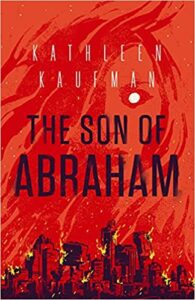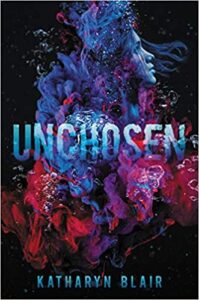The Son of Abraham (Diabhal #3) by Kathleen Kaufman
Turner Publishing, 2021(to be released Oct. 26)
ISBN: 9781684425389
Available: Hardcover, paperback, Kindle edition ( Bookshop.org | Amazon.com )
Note: The Son of Abraham is the third book in a trilogy. I haven’t read the other two, but this book, for the most part, can be read as a stand-alone.
Cults are always good material for horror stories, since some of the ones seen over the past thirty years (Branch Davidians, Heaven’s Gate, etc.) have truly been stranger than fiction. The Son of Abraham is a fresh take on the idea, if you like end-of-the-world tales, this book will make the grade for most readers.
The first 55 pages detail the hours leading up to a large-scale bombing of Los Angeles, by the Son of Abraham cult that kills 10,000 people, and this section is told from the perspectives of multiple people. The rest of the story takes place ten years later, and is told primarily for the viewpoint of two characters. One is Esther Robertson, the only surviving offspring of cult leader Alan Robertson; the other is Cooper Carlson, a news reporter who gets personally involved in the story. Their adversary is the still-alive Alan Robertson, who is locked down at the Supermax prison in Colorado. Cities start getting destroyed again, and signs point to Alan and his cult being involved, despite his being behind bars. Esther and Cooper get pulled into a race to stop Alan Robertson from destroying the entire planet, and the big question becomes: are they really acting on their own to stop him, or are they simply puppets Alan pulls the strings on in his quest for domination?
The dynamic between Esther, Cooper, and Alan is a big part of the book, and is a lot of what makes the story fun. Most people like to see the good guys win, but most readers of The Son of Abraham will be asking if Esther and Cooper even have a chance at all, as Alan is clearly no ordinary man. Unnatural destruction and murder in his presence do a good job of driving the point home. He’s a manipulative man, as the small character parts involving his followers, and the sacrifices they make for his ambition, demonstrate.
Esther and Cooper make excellent “heroes that don’t want to be heroes”, as they each have their own problems to deal with. Cooper isn’t sure if his news coverage of Alan is helping or hurting the general population. Esther is trying to save a world that has a lot of people that want her dead, only because she is Alan’s daughter. She had nothing to do with the LA bombing and the general public knows that, but it doesn’t matter in the age of sensationalistic news and social media. Their journey around the country chasing Alan’s web of destruction is fast-paced, striking a good balance between action and story development. The author adds another level of intrigue by re-writing the whole concept of the afterlife with the “Night Forest”, which ties into Alan Robertson’s desired goal of domination. It’s a more creative scenario for a religious leader, and it lifts the originality of the story.
Short version: if you like fast-paced Armageddon stories, you will like Son of Abraham. Recommended.
Reviewed by Murray Samuelson







Follow Us!